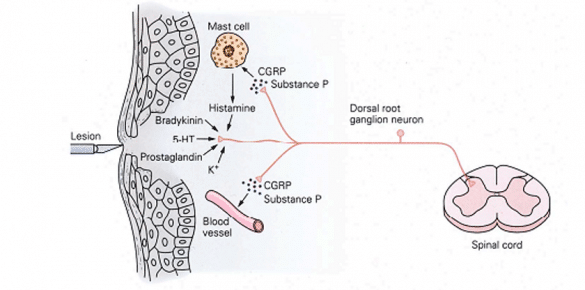Our validated and customized behavioral studies can help to demonstrate the efficacy of your products before they move into the clinic.
Postoperative pain (POP) is defined as a transient but extremely strong activation of the nociceptive network. Mechanical hyperalgesia and/or tactile allodynia are observed by applying force directly on the surgical wounds of patients after inguinal herniorrhaphy, open cholecystectomy, and abdominal hysterectomy, as examples. Several models of postoperative pain have been proposed to mimic surgical wounds. At a preclinical stage, the gold standard for POP is the Brennan Model (incisional pain). In anesthetized rats, a 1-cm longitudinal incision is made through skin, fascia and muscle of the plantar aspect of the hindpaw. Twenty four hours after surgery, the incision produces a mechanical, tactile and thermal allodynia and mechanical hyperalgesia. The incisional pain model enables assessment of the mechanisms of increased mechanical sensitivity following a surgical incision and is widely used for revealing the potency of new analgesics in a model of postoperative pain in conscious rats.
Postoperative pain (POP) is defined as a transient but extremely strong activation of the nociceptive network. Mechanical hyperalgesia is observed by applying force directly on the surgical wounds of patients after inguinal herniorrhaphy, open cholecystectomy and abdominal hysterectomy.
At a preclinical stage, the gold standard for POP is the Brennan Model (incisional pain). Nociceptive behaviors can be measured after incisional procedure, using notably the electronic Von Frey test.
The paw withdrawal threshold induced by the application of a progressive pressure is markedly decreased after the plantar incision, revealing a mechanical allodynia that lasts for several days. Mechanical withdrawal threshold (Randall-Selitto test) and weight bearing alterations are also observed. In this model, behavioral changes such as guarding are observed, indicating that spontaneous pain is induced by the surgical act.
The incisional pain model enables the assessment of the mechanisms of increased mechanical sensitivity following a surgical incision and is widely used for revealing the potency of new analgesics in a model of POP.

